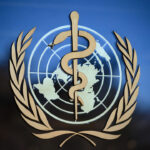 3,155 Deaths Recorded In Nigeria Since Outbreak
3,155 Deaths Recorded In Nigeria Since Outbreak
Almost three years after the World Health Organization (WHO) declared the COVID-19 pandemic a Public Health Emergency of International Concern (PHEIC), the global health body on Friday announced an end to COVID-19 as a public health emergency,
The global health body, however, warned that the declaration does not mean COVID-19 is over as a global health threat, stressing that the virus is here to stay, still killing, and changing, adding that the risk remains of new variants emerging that cause new surges in cases and deaths.”
PHEICs are events that are deemed to be extraordinary, constitute a public health risk to other states through international spread of disease, and potentially require a coordinated international response.
The first outbreak of COVID-19 occurred in November 2019 in Wuhan, China and as at the time the WHO declared COVID a public health emergency of international concern on January 30, 2020, there were fewer than 100 reported cases, and no reported deaths outside China.
According to WHO’s Coronavirus Dashboard which has collated key statistics since early in the pandemic, the cumulative cases worldwide now stand at 765,222,932, with nearly seven million deaths: the precise figure currently stands at 6,921,614.
As of 30 April, a total of more than 13.3 billion vaccine doses have been administered worldwide.
The WHO’s International Health Regulations Emergency Committee at its 15th meeting on COVID-19, discussed the pandemic and concluded that PHEIC declaration should come to an end.
Consequently, following the advice offered by the Committee, the Director-Director of the WHO, Dr Tedros Ghebreyesus, during a news conference in Geneva, declared that the COVID-19 no longer constitutes a Public Health Emergency of International Concern (PHEIC).
While acknowledging the remaining uncertainties posed by potential evolution of SARS-CoV-2, the Committee advised that it is time to transition to long-term management of the COVID-19 pandemic. The Committee’s position has been evolving over the last several months.
Giving reasons for accepting the decision to declare an end to PHEIC of Covid-19, Ghebreyesus explained that for more than a year now, “the pandemic has been on a downward trend, with population immunity increasing from vaccination and infection, mortality decreasing, and the pressure on health systems easing.”
He said, “It is with great hope that I declare COVID-19 over as a global health emergency. It does not mean the disease is no longer a global threat.”
The Director General, who observed that the decision had not been made lightly, said, “For the past year, the WHO-led Emergency Committee had been carefully examining the data, on the right time to lower the alarm. For over 12 months, the pandemic “has been on a downward trend, with immunity increasing due to the highly effective vaccines developed in record time to fight the disease, and infections. Death rates have decreased and the pressure on once overwhelmed health systems, has eased.
“This trend has allowed most countries to return to life as we knew it before COVID-19,” he added.
Ghebreyesus also noted the enormous damage inflicted on all aspects of global life by the virus, including enormous economic upheaval, “erasing trillions from GDP, disrupting travel and trade, shuttering businesses, and plunging millions into poverty.”
The WHO chief noted that as he was speaking, thousands around the world continue to fight for their lives in intensive care, and millions more, will live for the foreseeable future, “with the debilitating effects” of post-COVID conditions, or so-called “long COVID.”
He commended the “incredible skill and selfless dedication of health and care workers” worldwide.
“But at another level, it was a time for deep reflection, with COVID continuing to leave “deep scars on our world. These scars must serve as a permanent reminder of the potential for new viruses to emerge, with devastating consequences. Many mistakes were made, including a lack of coordination, equity and solidarity, which meant that existing tools and technologies were not best used to combat the virus. We must promise ourselves and our children and grandchildren, that we will never make those mistakes again,” he said.
“This experience must change us all for the better. It must make us more determined to fulfill the vision that nations had when they founded the WHO in 1948: the highest possible standard of health, for all people.”
Proceedings of the meeting published by the WHO showed that the DG, Dr Ghebreyesus, noted that the number of weekly reported deaths and hospitalisations continue to decrease, but expressed concern that surveillance reporting to WHO has declined significantly, that there continues to be inequitable access to life-saving interventions, and that pandemic fatigue continues to grow.
Ghebreyesus announced the publication of the 2023-2025 COVID-19 Strategic Preparedness and Response Plan which is designed to guide countries in transitioning to long-term management of COVID-19 which outlines important actions for countries to consider for five areas: collaborative surveillance, community protection, safe and scalable care, access to countermeasures, and emergency coordination.
Earlier, the Chair of the Emergency Committee, Professor Didier Houssin provided views to the WHO Director-General on whether the COVID-19 pandemic continues to constitute a PHEIC and to review Temporary Recommendations to States Parties.
While deliberating on the Status of the PHEIC, the Committee considered the three criteria of a PHEIC, which includes whether COVID-19 continues to constitute an extraordinary event, a public health risk to other States through the international spread, and potentially requires a coordinated international response.
The Committee also discussed the current status of the COVID-19 pandemic and acknowledged that, although SARS-CoV-2 has been and will continue circulating widely and evolving, it is no longer an unusual or unexpected event.
It recognised that while the global risk assessment remains high, there is evidence of reducing risks to human health driven mainly by high population-level immunity from infection, vaccination, or both; consistent virulence of currently circulating SARS-CoV-2 Omicron sub-lineages compared to previously circulating Omicron sub-lineages; and improved clinical case management. These factors have contributed to a significant global decline in the weekly number of COVID-19 related deaths, hospitalizations, and admissions to intensive care units since the beginning of the pandemic. While SARS-CoV-2 continues to evolve, the currently circulating variants do not appear to be associated with increased severity.
The Committee deliberated on the potential benefits and issues posed by maintaining the PHEIC. While the PHEIC has been a valuable instrument to support the global response to COVID-19, the Committee agreed that the time is right to move towards the long-term management of SARS-CoV-2 as an ongoing health issue.
Moving forward, the Committee suggested that the DG considerS convening an IHR Review Committee to advise on Standing Recommendations to for long-term risks posed by SARS-CoV-2 taking into account the 2023-2025 COVID-19 Strategic Preparedness and Response Plan. At the same time, the Committee recognized that Member States are currently negotiating the Pandemic Prevention, Preparedness, and Response Accord, discussing amendments to the IHR, and considering the ten proposals to build a safer world together by strengthening the Global Architecture for Health Emergency Preparedness, Response, and Resilience (HEPR).
Nigerian Situation
The first confirmed case in Nigeria was announced on 27 February 2020, when an Italian national in Lagos tested positive for the virus while on 9 March 2020, a second case of the virus was reported in Ewekoro, Ogun State, a Nigerian citizen who came into contact with the Italian national.
To date, 266,675 cases have been confirmed in the country, 259,953 cases have been discharged and 3,155 deaths have been recorded in 36 states and the Federal Capital Territory (FCT).
The recent outbreaks of infectious diseases such as Ebola, Lassa fever, and COVID-19 have highlighted the urgent need for a strong legal framework to guide the response to public health emergencies.
To address this pressing need, the National Assembly has collaborated with relevant stakeholders and partners to propose a series of new public health bills aimed at enhancing the country’s response to public health emergencies.
These bills include the Public Health Emergency Bill, which seeks to provide a comprehensive legal framework for managing public health emergencies, and the Amendment of the National Health Act, which seeks to address gaps in the existing legislation that hinder effective response to public health emergencies. In addition, the Port Health Authority Bill is aimed at establishing and strengthening the Port Health Authority, responsible for health security at the country’s borders.
Considering the significant implications of these Bills on public health in Nigeria, the Nigeria Health Watch, will within the week, bring together stakeholders from the government, civil society, academia, and the media to discuss the importance of these bills and the potential impact they could have on public health in Nigeria.
The roundtable will provide an opportunity for experts to share their views and insights on the bills, discuss the challenges and opportunities that they present, and identify areas where further action is needed to ensure that Nigeria is better prepared to respond to public health emergencies.












